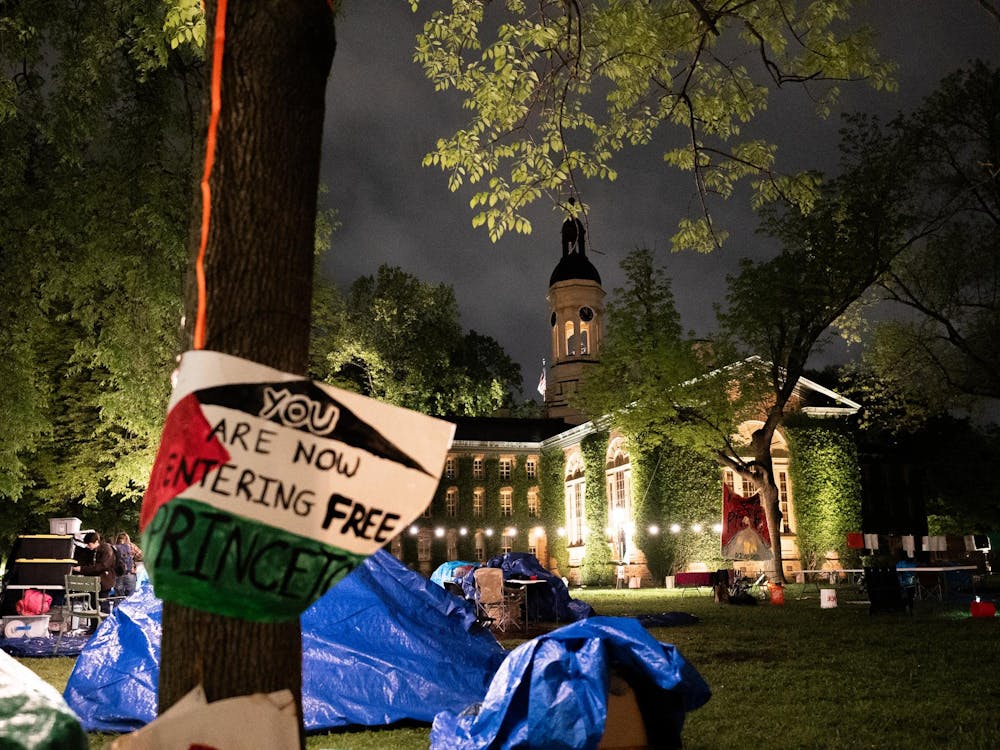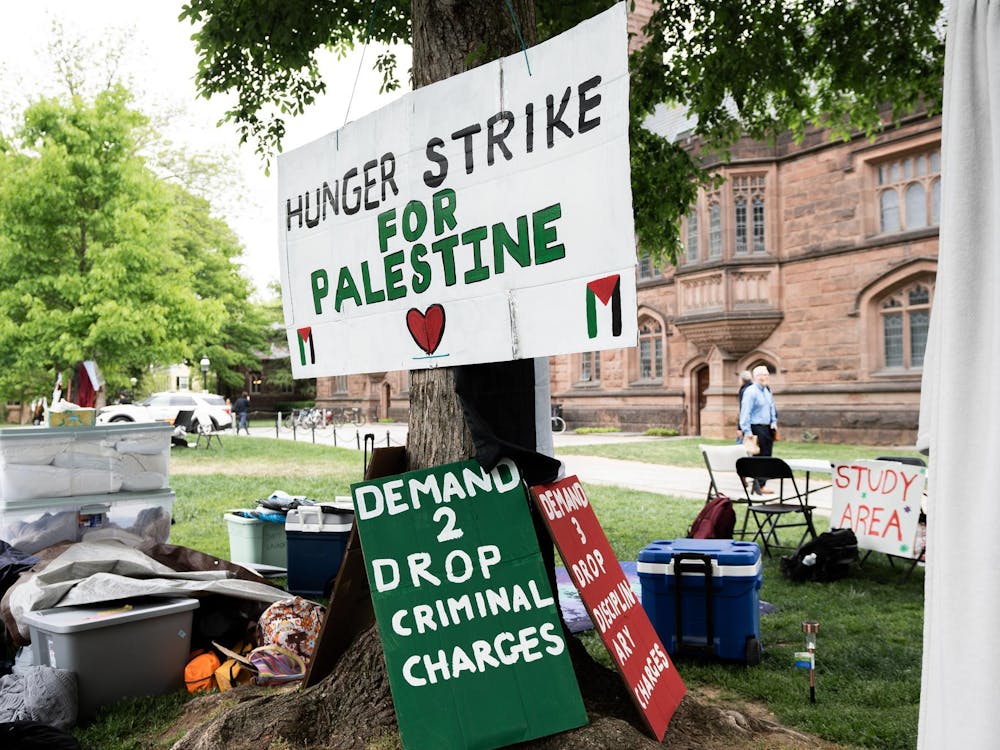In the fall of her sophomore year, Sarah ’10 received an e-mail from her sorority inviting her to an unusual gathering. Instead of advertising an upcoming semiformal or tailgate, this e-mail announced one of the sorority’s annual Bicker workshops.
“They send out e-mails saying, ‘Anyone who’s interested in bickering Cap, Cottage, TI, Ivy, whatever, we’ll be having a Bicker workshop, ‘x’ time at this place … and we’ll be telling you what the process is,” explained Sarah, whose name has been changed because she spoke on the condition of anonymity. During these workshops, she said, several of the older sisters describe the process, giving advice about how to navigate the social scene during Bicker.
Sarah, who successfully bickered in the spring of her sophomore year, added that sorority affiliations affect the course of Bicker discussions. “I remember being at Bicker, and every single person from a sorority would stand up for anyone who was in that sorority,” she said.
Activities like these workshops help sorority members navigate Bicker and promote Greek organizations as “feeders” into certain eating clubs. Sorority and fraternity members, as well as varsity athletes, are in general more likely to bicker and more likely to be accepted into bicker clubs than other students, according to an October 2009 evaluation of the Committee on Background and Opportunity (COMBO) survey results by the Analysis of Princetonian Attitudes Committee (APAC).
The APAC report shows that nearly 90 percent of members in Greek organizations bicker and almost 70 percent of those who did were successful. At the same time, slightly less than 40 percent of all other students chose to bicker and slightly less than 50 percent of those students were successful. But these statistics may be complicated by income, which is also correlated with membership in a bicker club: Of respondents who reported family incomes greater than $500,000, 27 percent were members of Greek organizations, while only 5 percent of respondents who reported incomes less than $75,000 were fraternity or sorority members.
“There’s a pretty well-developed feeding relationship or pipeline between some particular fraternities and sororities and some particular bicker clubs,” University Vice President and Secretary Bob Durkee ’69 said. “And concerns have been expressed about that by, among others, some of the chairs of the graduate boards of the clubs.”
But Megan ’11, a former sorority member whose name has also been changed because she spoke on the condition of anonymity, said in an e-mail she doesn’t think Greek organizations have concrete “feeder” relationships with eating clubs. “It’s more that if you’re in a frat or sorority, you have more reassurance that there are people in the club that are on your side and are working to get you in,” she explained. “I mean, people want their friends in their clubs. Presumably, your frat brothers or sorority sisters are your friends, so you’ll try to get them in.”
These associations are not particular to athletics and Greek life, Megan added. “Greek organizations and sports teams suit bicker well, but so do any number of other organizations. Basically, any ties to people in clubs will help you in bicker. The more people you know in a club, the higher the chances are that you’ll get in. I don’t think there’s anything unfair going on, it’s just a self-selecting process.”
Aran Clair ’10, president of Cloister Inn and the Interclub Council (ICC), said he believes the stereotypes applied to Greek organizations in relation to eating clubs are unfair. “The stereotype exists that Greek organizations are feeders to certain clubs which is unfortunate. In my experience, it seems as though folks like to scapegoat frats and sororities as feeders into three bicker clubs, but people overlook the fact that other disciplines are ‘feeders’ just as much as their Greek counterparts,” he said in an e-mail, pointing out that certain majors, sports teams and student publications also may “feed” into certain clubs. Clair also noted that such associations can apply to both bicker and sign-in clubs.
Associate Dean of Undergraduate Students Maria Flores-Mills echoed this sentiment. “I think there are some other student organizations outside of athletics and social organizations that likewise serve as sort of ‘feeders’ to groups, because students do cluster around their interests,” she said. “I think it’s problematic if the purpose of those organizations is to sell themselves as feeders, [with] that being the driving force of the organization.”
But Megan said she believes most women do not choose to join a particular sorority because of its ties to certain eating clubs. “I’m sure there are some social climbers who try to plan out the most advantageous affiliations for their social plan, but they’re a minority,” she said.
Sarah offered a different perspective, however. “I think there’s definitely a lot of social climbing that goes on,” she said. “For people for whom it’s really important to be in a bicker club or specific club, [membership in a fraternity or sorority] definitely helps them out.”

Durkee noted that Greek organizations currently have a presence on campus that is different from the presence they had decades ago.
When fraternities and sororities were first developing at Princeton, Durkee explained, “one of the ways that some of the fraternities and sororities described themselves was as places for students who came to Princeton without knowing much about Princeton, without knowing much about college — first-generation [students], students who had no family connection to Princeton, [students] who had no history at Princeton.” The idea, he suggested, was that older students could “show them the ropes” and help them in “navigating their way through Princeton.”
Now, Durkee said, there are students who “enter into the fraternities and sororities not because they need to figure out the social system at Princeton, but because they have figured out the social system at Princeton, have decided that they want to be in a particular club and have decided that the best way to maximize their chance of doing that is to become part of a particular fraternity or sorority.”
Administrators and students alike expressed concern that such affiliations might affect the diversity of club membership.
“I think it’s only natural that the process of certain student groups ‘feeding’ into eating clubs may limit the overall diversity [of] the club,” said USG president Connor Diemand-Yauman ’10.
Varsity athletes, like sorority and fraternity members, often join bicker clubs, usually with several other members of their respective teams.
The APAC report shows that nearly 60 percent of varsity athletes chose to bicker, and 67 percent of varsity athletes who bickered were successful. Slightly less than 40 percent of non-athletes chose to bicker, and roughly 50 percent of non-athletes who bickered were accepted.
Track team members Ted Price ’10 and Dion Lehman ’11 said that the majority of track athletes are members of Cap & Gown Club, but both chose to join different eating clubs. Price is a member of Ivy Club, and Lehman is a member of Quadrangle Club.
“Cap’s where all the track people are. It hasn’t always been like that, but it’s been like that for a long time … During my freshman year, I was basically set on doing Cap with my friends,” Price said. After going to Ivy for meals and on the weekends with an upperclassman on the track team, however, Price and another teammate ultimately decided to bicker Ivy instead.
“We decided, really, like the day of [Bicker],” Price said, noting that he made his decision partly to expand his social circle. “The track guys in Cap, I see them for three hours a day anyways,” he explained.
Lehman, who joined Quad with friends he knew from Christian fellowship groups and Athletes in Action, had a similar rationale. “I had friends on the track team, and I also had friends outside the track team, and I wanted to spend time with both,” he said. “I knew if I did a different club with these guys, I’d have practice with my team. I didn’t feel like I needed to be in the same club as my teammates.”
Bianca Williams ’11, a Cap member who is also on the track team, said that athletic affiliations do not automatically translate into success in the club’s bicker process. “I guess it’s just easier for athletes to get into a club because there are some other athletes who are already members of the club,” she said. “But I know Cap, based on what I see in discussions, [tries] to avoid letting people in just because they are a member of a certain team.”
Cap president Andres Perez ’10 said in an e-mail, “Cap and Gown strives to be as open to anyone who thinks they may want to be a part of our club – and to do so within the bicker process … I think it is hard to say that ‘self-selection’ is not at least a small factor, since choosing to bicker this club, or any of the others, is a choice left up to those people — as individuals, not as part of a group.”
But while the choice to bicker is ultimately up to the individual, membership in a group can influence the choice of which club to bicker, students said.
“There was pressure,” Price admitted, noting that younger team members “were some of the guys that felt like they, I guess, wanted to keep all of the track guys in Cap,” though he noted that older members were “more understanding.”
Lehman, however, said that he did not experience much pressure to bicker Cap. “I never felt a lot of pressure to bicker, even though that’s what most of my friends did,” he said. “That’s the only pressure I felt, just implicit pressure to want to do what my friends do.”
ICC adviser Tim Prugar ’06 said that, in the process of selecting which club to bicker, “Peer pressure is probably a factor. But you can apply that to an enormous number of things at Princeton.”
“I don’t think [eating clubs] are an exception to the rule, and they’re not the only place that peer pressure is employed,” he added.
Lehman said he has enjoyed his club experience in ways he didn’t necessarily foresee. “I didn’t really expect to go in and just find a bunch of new friendships, although I guess I should have in hindsight,” he said. “So I have made a lot of friends I wasn’t expecting to, which has been one of the coolest parts about being involved in a club, because it throws you into new social circles that you wouldn’t otherwise maybe get to experience.”
Recent data from COMBO II reveal that about 9 percent of survey respondents were recruited varsity athletes and about 6 percent were non-recruited varsity athletes. About 10 percent of respondents were members of Greek organizations.
Most administrators and students interviewed said they believe that any relationships between athletic teams or Greek organizations and certain eating clubs are a subset of the larger social dynamics on campus.
“People are influenced by their peers. They elect to go to places where their peers and friends go,” Vice President of Campus Life Janet Dickerson said. “We think about our own personal comfort when we’re making decisions about where we’re going to sit down to eat, or where we’re going to socialize.”
But the eating club scene can also provide an opportunity for students to socialize with people outside their usual group of friends, Williams said. “A big part of that is to get to know other people who are bickering that aren’t athletes,” she explained. “You find that they’re probably just as good of a fit for the club as your friend who’s on your team.”
This is the third article in a five-part series on the eating clubs and the COMBO data.








